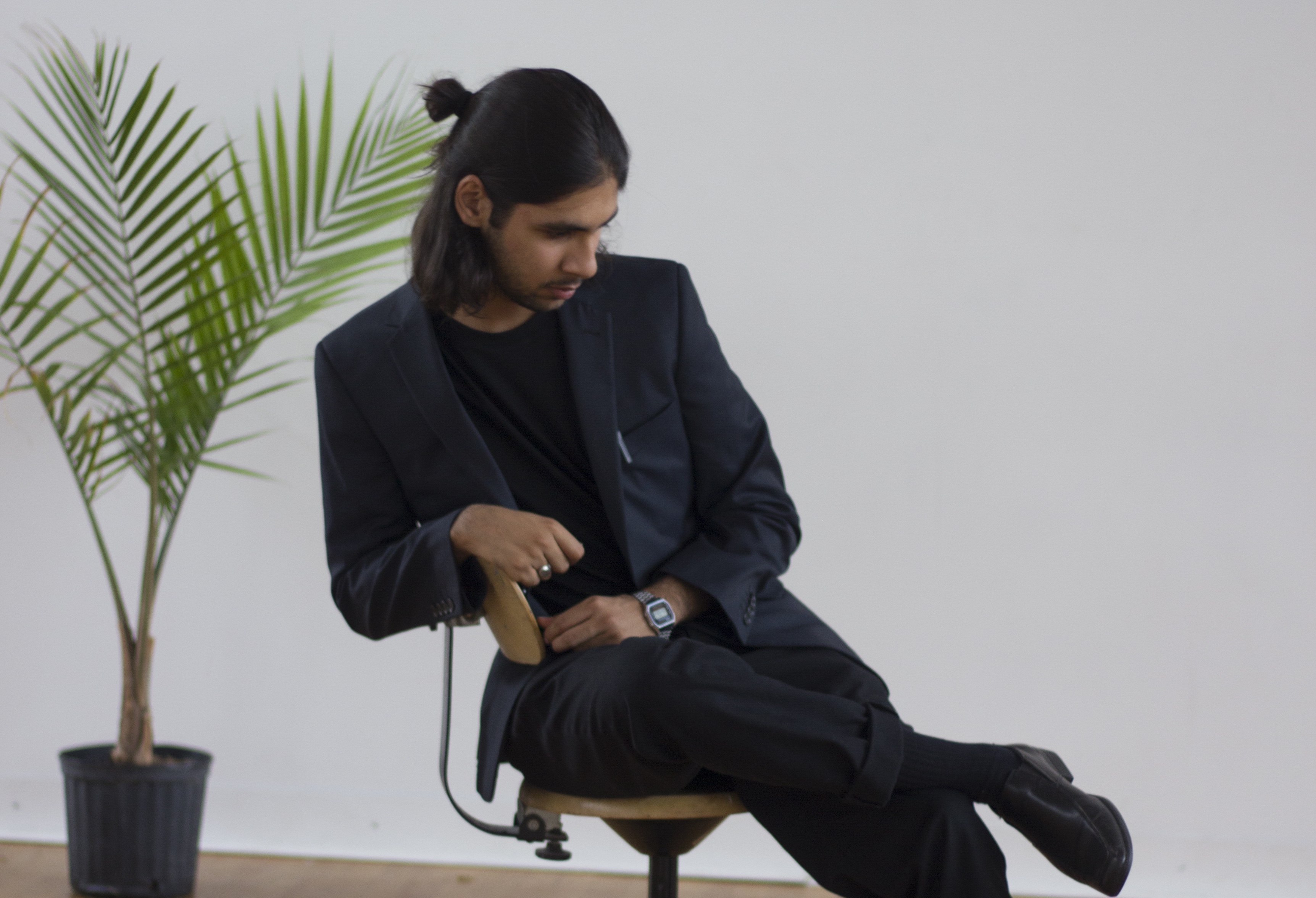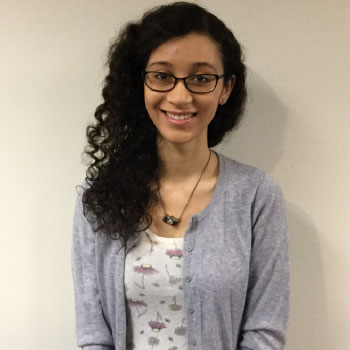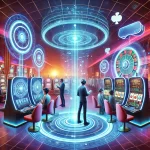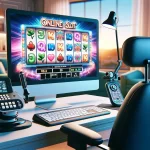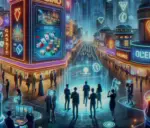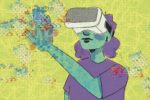Early in the morning on September 2, 2015, before the sun had risen and the pops of gunfire had begun for the day, three-year-old Alan Kurdi and his family boarded a tiny dinghy to flee Kobani, Syria, their hometown and a war-torn battleground in the Syrian Civil War; when their boat capsized hours later in the middle of the Mediterranean Ocean, the young boy, his mom and his brother all drowned. A Turkish journalist photographed Kurdi’s lifeless body lying facedown in the sand, and the image sparked an international outpouring of sympathy. In that instant, through that photo, the horror of the Syrian Refugee Crisis captured the attention of the world, the emotional weight of the dead child’s image proving a more effective catalyst for action than the hundreds of activists who had tried to convey the desperation of their situation for years. It’s easier to ignore something you can’t see.
Asad J. Malik, a twenty-one-year-old junior at Bennington College, a private, nonsectarian school in the southwest corner of Vermont, understands better than most how divorced Americans are from the the tragedies that they read about every day. Malik, who, since Bennington doesn’t offer traditional majors, is on a specialized study track focusing on augmented and mixed reality, was born in Abbottabad, Pakistan, in a hospital not five minutes from where Osama bin Laden was killed by U.S. special forces. In Pakistan, unlike in America, being “at war” viscerally affected his daily life. “I was raised in a country where the impacts of the post-9/11 War on Terror were felt in everyday life,” Malik told me over the phone. “The images of violence that frequented our television screens were from the same cities and towns that we populated.”
In America, through television, the internet and social media, the collective conscience has been so inundated with images of faraway tragedy that many people have become desensitized to it. For over a decade, the United States has been involved in a war that has hardly come within a thousand miles of American soil, which means that the impact of that conflict on daily life has been virtually nonexistent. Tragedies abroad occur and reoccur, each time spiking sympathy throughout the country for a few days, until the fervor passes and life returns to normal.
When Malik moved to Vermont to attend college, this disparity astounded him. “Since I’ve moved to the U.S., images of war have followed cat videos, Trump memes, mutilated dead bodies in Syria, beautifully designed mattress ads—one after the other on a scrolling newsfeed. The country is at war but something’s fundamentally different; there is no war, at least not here. No drones in the sky, no fear of public spaces, no reason to hide. The war might be real in some foreign land. But not here. Here, it’s merely rising defense stocks and a series of images on a four-inch screen.”
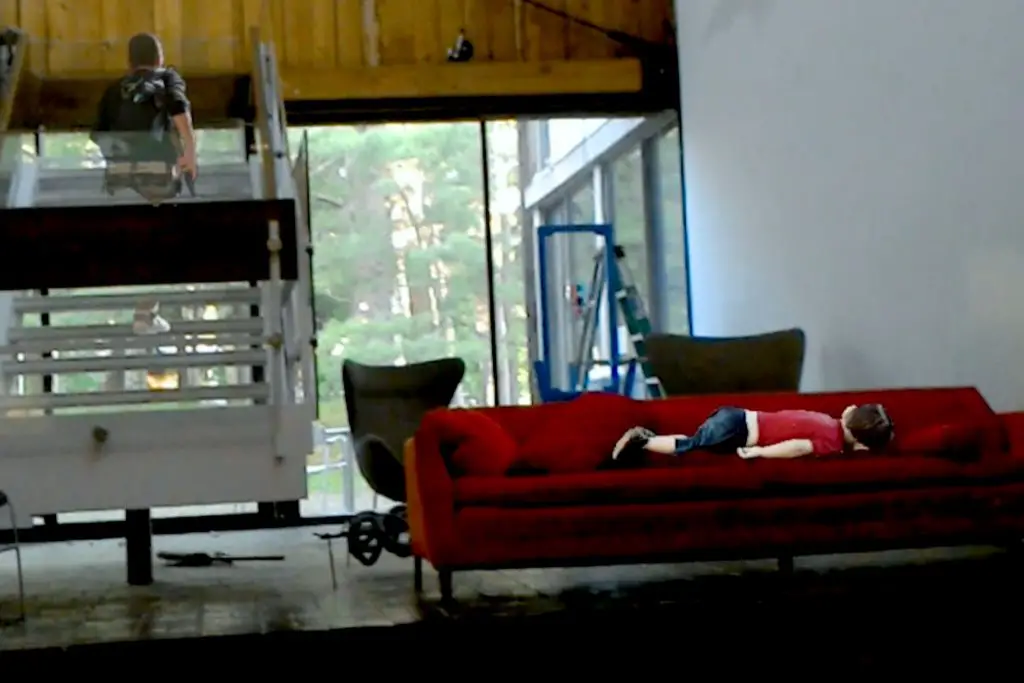
With his augmented reality project, “Holograms from Syria,” Malik aims to undermine the ignorance that Westerners use to shield themselves from having to acknowledge their complicity in foreign instability. The project debuted first as an installation in the Visual and Performing Arts Centre at Bennington College in Vermont. To experience the exhibition, viewers were invited to put on a Microsoft Hololens headset, which transformed the building into a structure littered with holographic images of war. In the foyer, young Alan Kurdi’s body rests on a bright red couch. In a stairwell, Aleppo elite forces, guns in hand and garbed in body armor, bound up the steps students use every day. The effect of such a union is both jarring and powerful. “Viewers agreed that they couldn’t see that space or that couch in the same way again, whether or not they were wearing the Hololens,” says Malik. “The project served the simple purpose of reminding the viewer that in our state of perpetual warfare, the couch that they sit on is socially, politically and economically connected to someone else’s dead body.”
Bringing the War to You
The holograms aid in recontextualizing the grisly images coming out of war-torn countries, such as Syria, by placing them into the same space the viewer inhabits, forcing them into an active rather than passive participation with the photos. Malik began working with augmented reality and the Hololens nearly a year ago, fascinated by the possibilities that the technology offered. “Instantly, I was struck by the opportunity of producing creative content that would have the potential to change how the user perceives the reality they inhabit,” he says.
The Microsoft Hololens is used to integrate flat holographic image cutouts from the war in Syria to the viewer’s field of vision. They’re the same images you would see on the news, except that with the Hololens, the distant images are now life-sized. To achieve the effect, using editing software, Malik removes the backgrounds of the photos and cuts out the human figures until they become reminiscent of architectural silhouettes. “The images are then projected onto the viewer’s eye to create the illusion that the Syrians affected by war are interacting with the viewer’s surroundings. The backside of each hologram is composed of a zoomed in portion of the original image.”
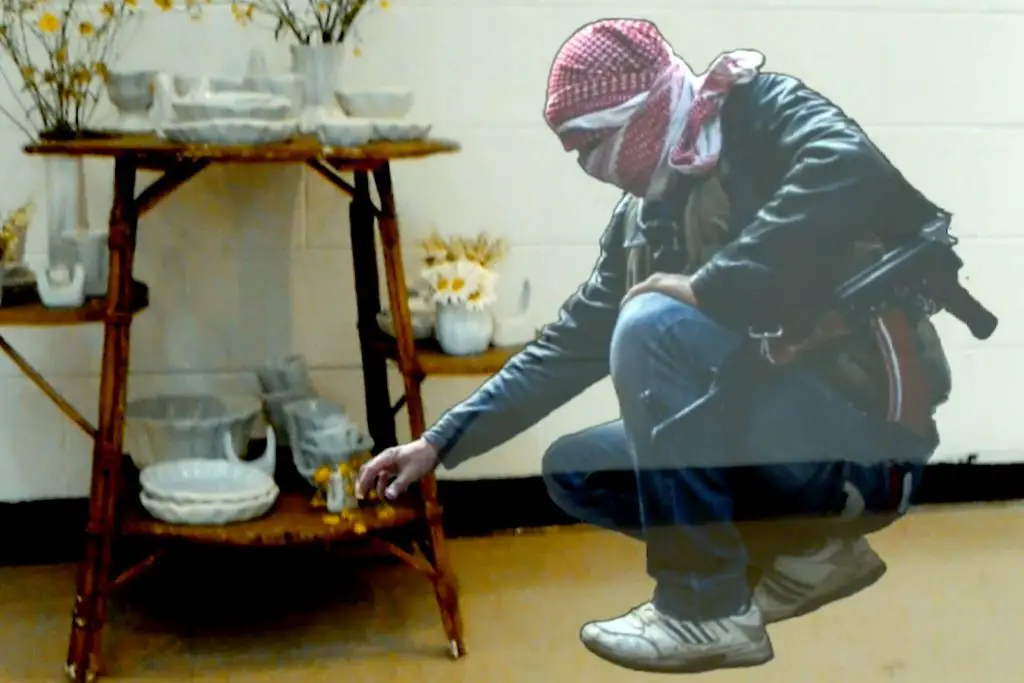
According to Malik, the actual Hololens experience that became “Holograms from Syria” was started and completed in one caffeine-fueled sleepless night, though the project went through several iterations before the Bennington junior settled on one he was satisfied with. In fact, he even considers some of the scrapped, earlier versions more technically complicated than the final product. “It took me a while to be content with this conclusion since it seemed too simple,” he says. “The truth of the matter is that, while working with futuristic technology like the Hololens, it is very easy for the novelty of the technology to become the most exciting feature of the project. Keeping the project simple allowed for the concept to come through.
As a result of its blend of incisive political rhetoric and cutting-edge technology, “Holograms from Syria” garnered international attention almost immediately. Right after announcing the project via a video interview with “Quartz,” Malik was contacted by “The New York Times” and CNN, among others. He described the project to them as a chance to establish himself as an artist whose work is rooted in asking hard questions about the way we interact with war and with each other.
Influences from the Past
There are two principal influences in Malik’s work with augmented and mixed reality: “Bringing the War Home” by Martha Rosler and “The Gulf War Did Not Take Place” by Jean Baudrillard. In the 1960s, the collage work of Rosler, an American artist based in New York, brought the harsh realities of the Vietnam War into the American living room. One of her most famous works, “Balloons,” from the “Bringing the War Home” series, shows an immaculate American living room, complete with sunlight streaming through a sliding door onto several plush white sofas and a thick shag rug; in the picture’s foreground, an incongruously disarrayed Vietnamese mother with a look of terror on her face holds her naked, blood-flecked child.
As Rosler used the series to recontextualize images of war into quotidian American life through the technology of her day, it’s impossible to ignore the parallels between her work and Malik’s, a reality he fully acknowledges. Indeed, one still from Malik’s holograms transports the viewer to a crowded beach where, in the foreground, a crouching man holds the body of a bleeding boy in his arms, clutching him to his chest with an expression of agony on his face.
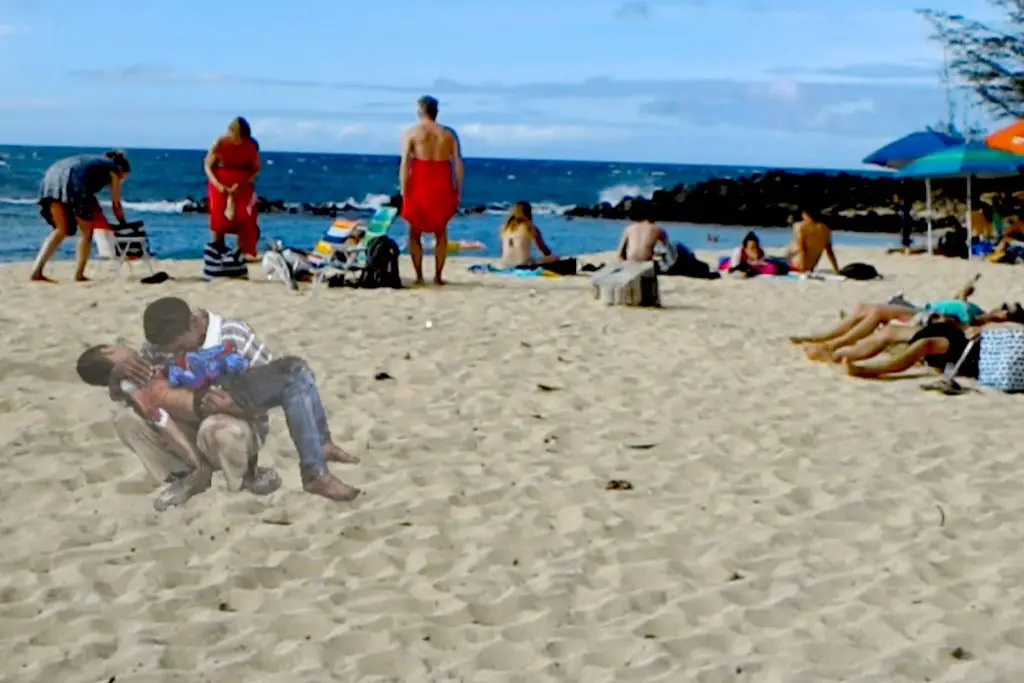
Rosler relied on the imagination of her audience to visualize the shocking immediacy of living through a war that you couldn’t escape by turning off the TV. With technology such as the Hololens at his disposal, by using augmented reality to literally bring the images into the space that the viewer inhabits, Malik can take Rosler’s collages a step further.
Jean Baudrillard, a French sociologist, philosopher and author of the heavily influential “Simulacra and Simulation,” penned a series of essays in 1991 entitled “The Gulf War Did Not Take Place,” which proposed that war in our current political reality has been reduced to a simulation. Baudrillard argued that the Gulf War was not a war, but a massacre masquerading as a war. The author also argues that an objective analysis of the conflict was nearly impossible, as much of the imagery that emerged from the attack met the definition of propaganda, rather than unbiased imagery, meaning that the U.S. government controlled the narrative of what really happened in the military offense.
Malik’s work lives in that struggle to distinguish between reality and unreality in modern war, and he points to a specific quote that helped motivate his efforts as an artist: “But there is more than one kind of absurdity: that of the massacre and that of being caught up in the illusion of massacre. It is just as in La Fontaine’s fable: the day there is a real war you will not even be able to tell the difference. The real victory of the simulators of war is to have drawn everyone into this rotten simulation.” The notion that a reality that everyone believes to be true—even those who were directly involved—could be a simulation, was considered controversial by Baudrillard’s contemporaries and detractors.
Defining Mixed Reality
As a field, mixed reality (MR) is still very new. Definitions and official names are forever shifting around. The first mixed-reality system to provide an experience with sound, sight and touch was the Virtual Fixtures platform, which was developed at the U.S. Air Force’s Armstrong Laboratories in the 1990s to allow human users to control robots in real world environments. The currently accepted definition of mixed reality is “the merging of real and virtual worlds to produce new environments and visualizations where physical and digital objects co-exist and interact in real time.” In 1994, Paul Milgram and Fumio Kishino defined MR as “anywhere between the extreme of the virtuality continuum.”
Malik locates his own work with “Holograms from Syria” on the scale created by Milgram and Kishino. The scale, which is a flat line, puts “real environment” on the far left and “virtual environment” on the far right. Just slightly to the right of “real environment” is “augmented reality,” and just slightly to the left of “virtual environment” is “augmented virtuality.” According to Milgram and Kishino, mixed reality is anything that falls anywhere on the scale between the two poles of a wholly real and wholly virtual environment.
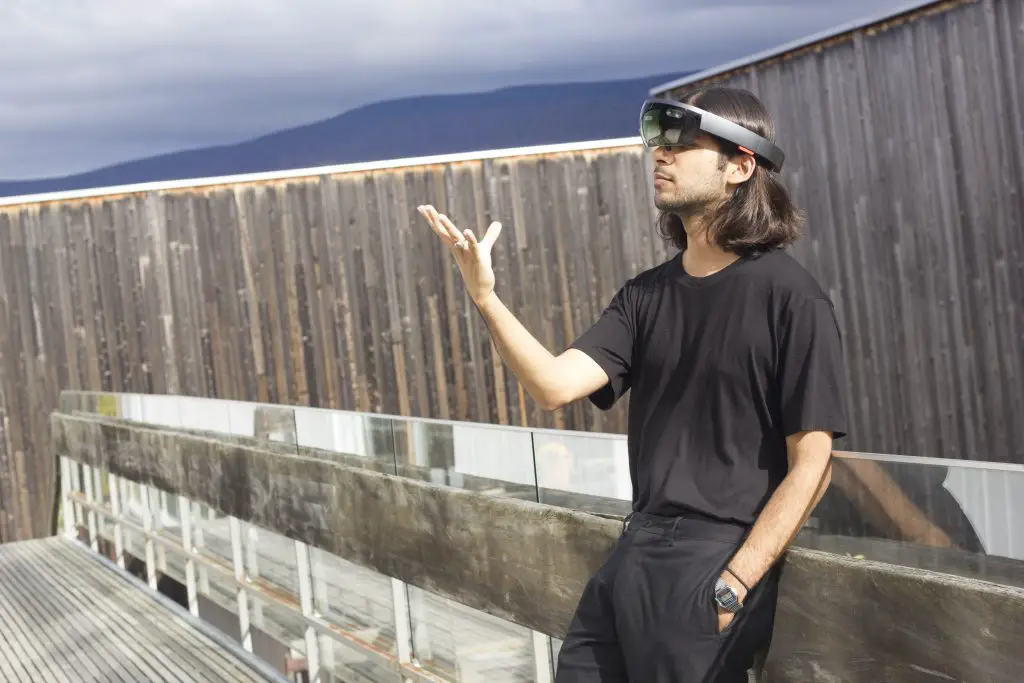
Initially, Malik labelled himself as a mixed-reality artist due to his work with the Microsoft Hololens; MR is a widely used term and more approachable for those new to the field. However, Malik recently switched to the more technically accurate designation of augmented-reality artist, since that’s closer to describing what his work actually is. Augmented reality is simply a computer-modified version of reality, similar to Pokemon Go. Virtual reality, on the other hand, is an entire computer-generated world that replaces the real life.
A New Medium for Storytelling
Earlier artistic undertakings laid the foundations for Malik’s ambitious future goals. Prior to the creation of “Holograms from Syria,” Malik explored the realm of augmented reality in a project called “Harry Potter AR.” Yes, it is exactly what it sounds like. Hololens-users wielded a real life wand, casting spells and banishing dementors back to Azkaban with a well-placed Patronus. The process tested the waters for Malik before he began pursuing bigger projects.
The success of “Holograms from Syria” has given the artist, who produces AR art under the pseudonym 1RIC, a strong voice in how augmented reality can be used as a medium to develop new storytelling techniques. In order to further explore the capabilities of the new field, Malik is currently in the process of converting 1RIC into the world’s first studio focused exclusively on non-fiction storytelling through augmented reality.
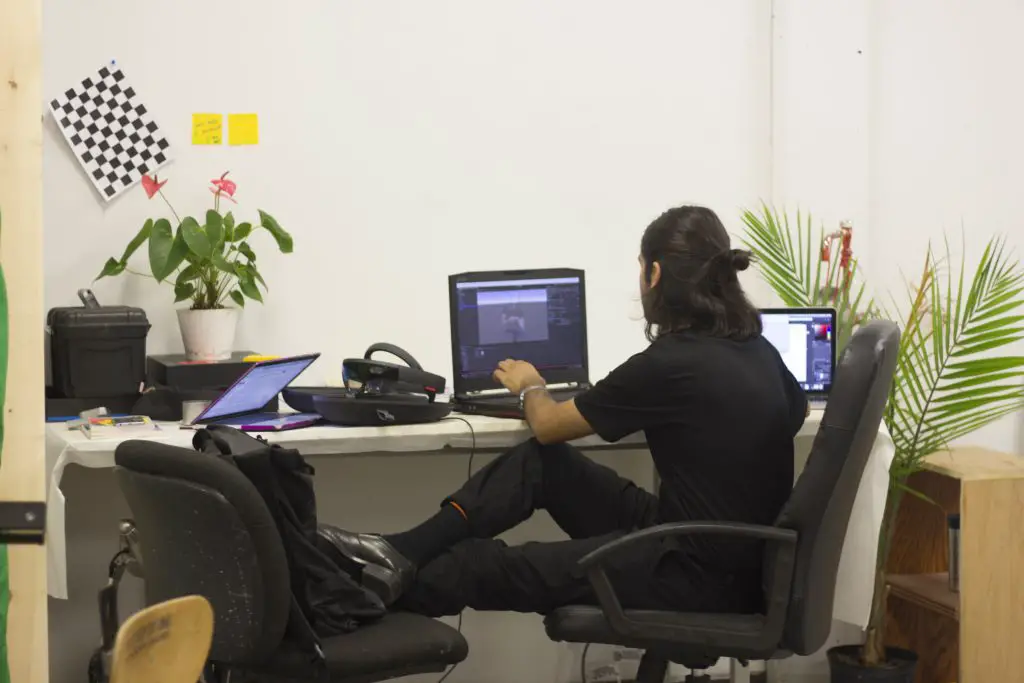
According to the Bennington student, the first project on deck for 1RIC is an interactive, augmented-reality documentary that portrays the diversity of socio-political experiences of people perceived as Muslims in the U.S. Where the images in “Holograms from Syria” were flat, the interviews for Malik’s newest project will be filmed in volumetric 3D, allowing for a greater depth of dimension and more robust user experience. The ultimate vision for 1RIC, at least at the moment, is to explore the world of “cultural augmentation,” which Malik describes as a displacement of holograms that will allow viewers to access what their environment would regard as contentious, controversial opinions.
Malik will be the first to acknolwedge that his work, since working on the Harry Potter AR, has certainly become more political. Unlike much of the AR industry, which, as a medium, is often dominated by escapist fantasies and alternate realities, Malik wants to use the technology to approach real stories from previously inaccessible perspectives. Instead of using the Hololens as another tool to help put reality out of mind, Malik sees the tech as a groundbreaking way to bring attention back to what matters. In a world of social media moments, sound bites, headlines and snippets, the Bennington College artist is looking for depth.
Keep up with Asad J. Malik and his newest projects on his website and Facebook.


